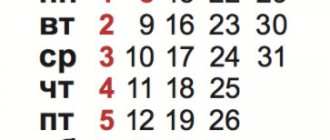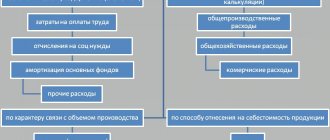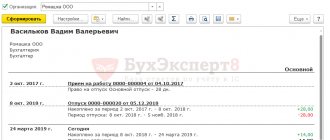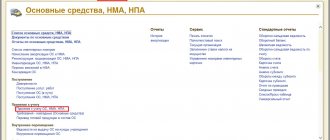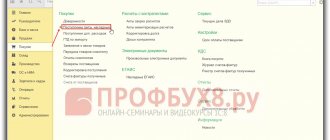List of cars
The order of the Ministry of Transport of the Russian Federation for reporting created a list of cars, which included:
- "cars";
- cars with vans;
- vehicles owned by the Ministry of Health;
- the country's bus fleet;
- trucks;
- special equipment;
- tow trucks and so on.
As for passenger vehicles, which are considered to be the leaders in the number of units in Russia, the fuel consumption rate is calculated by the formula:
- Qн = 0.01 x Hs x S x (1 + 0.01 x D).
Consumption is indicated by the symbols Qн in liters. The established rate of fuel consumption per 100 kilometers is designated Hs. Vehicle mileage is indicated by the symbol S. The coefficient D is used to correct the total, displayed as a percentage of the standards.
It should be noted that, according to the directive document of the Ministry of Transport, this formula is recognized as meeting the needs of automobile fuel accounting for statistical records.
Calculation adjustments
In road transport, unproductive losses of liquid fuels, especially gasoline, are still observed. The regulatory document is intended to streamline and accustom drivers to saving automobile fuel.
- The Ministry of Transport issued this well-known administrative document for 2021 on March 14 under the number AM-23-r on fuel consumption standards.
It is characteristic that the Order is sporadically updated. Drivers are given new recommendations on the careful use of motor fuel. After all, the country's car fleet is dynamically updated with new models. Here it is appropriate to introduce increasing coefficients. For example, make amendments to vehicles serving large cities in Russia.
Today, cities inhabited by millions of people require increased vehicle fuel consumption standards:
- In urban areas with 1 million inhabitants, the consumption rate of gasoline or diesel is 25 percent higher;
- And in cities where the population has reached 5 million people, this figure is 35 percent.
Increased fuel consumption is required by vehicles with a decent operating life. And here changes have been made for the better. If earlier additions to the norm were made according to two indicators, today one indicator to choose from is taken as a sample. Either for the car's mileage of 100 thousand kilometers, or for its age. Previously, standards were adjusted based on these two indicators.
How to count
Officials identified three main concepts:
| Basic NRT | This is the standard cost of fuel and lubricants. Installed separately for each brand of vehicle. Takes into account individual designs, curb weight, type of fuel consumed and other characteristics. The type of flow is applicable for standard, typified situations. |
| Transport NZT | This type of regulatory use is applied taking into account the characteristics of the transport operation of the unit. In essence, this is a basic standard, recalculated taking into account the carrying capacity, towing force, and the rated load of cargo or passengers. That is, a standard taking into account the performance characteristics of the car. |
| Operational NRT | This is a real cost standard, which is recalculated taking into account correction factors. These are basic and transport NRT, which take into account the operating conditions of the vehicle (terrain, climate, temperature conditions and other operating features). |
Each of the standard values is recalculated in relation to the base value, taking into account correction factors. A detailed table of fuel consumption standards for 2021 reveals values by car brand. Abbreviations in the table:
- B - gasoline;
- D - diesel fuel;
- LPG - liquefied petroleum gas;
- CNG is compressed natural gas.
| Model, brand, modification of the car | Basic rate, l/100 km | Type of fuel |
| VAZ-1111 "Oka" | 6,5 | B |
| VAZ-11113 "Oka" (VAZ-11113-2L-0.75-35-4M) | 5,6 | B |
| VAZ-11183 "Kalina" (VAZ-21114-4L-1,596-81-5M) | 8,0 | B |
| VAZ-2104 | 8,5 | B |
| VAZ-21041 (VAZ-21067.10-4L-1,568-74,5-5M) | 9,1 | B |
| VAZ-21043 (VAZ-2103-4L-1.45-71-5M) | 8,3 | B |
| VAZ-21043 (VAZ-2103-4L-1,451-71,5-4M) | 9,0 | B |
| VAZ-2105, -21051, -21053 | 8,5 | B |
| VAZ-2106 (VAZ-2106-4L-1.57-75.5-5M) | 8,5 | B |
| VAZ-2106 (VAZ-2106-4L-1.57-75.5-4M) | 9,0 | B |
| VAZ-21061 | 9,0 | B |
| VAZ-21063 (VAZ-2130-4L-1.77-82-5M) | 9,0 | B |
| VAZ-2107 (VAZ-2103-4L-1.45-72.5-4M) | 8,6 | B |
| VAZ-21072 (VAZ-2105-4L-1.3-63.5-4M) | 8,9 | B |
| VAZ-21074 (VAZ-2106-4L-1.57-75.5-5M) | 8,5 | B |
| VAZ-21074 (VAZ-21067-4L-1,568-74,5-5M) | 8,9 | B |
| VAZ-2108, -2108 “Sputnik”, -21081, -21083, -2109 | 8,0 | B |
| VAZ-21093 (VAZ-2111-4L-1,499-79-5M) | 7,7 | B |
| VAZ-21093; -21099 1.5i (VAZ-21083-20-4L-1.5-71-5M) | 7,5 | B |
| VAZ-21099 (VAZ-2111-4L-1,499-79-5M) | 7,8 | B |
| VAZ-2110 1.5i (VAZ-21083-20-4L-1.5-71-5M) | 7,4 | B |
| VAZ-2110-010 (VAZ-2110-4L-1,499-73-5M) | 7,8 | B |
| VAZ-21102 (VAZ-2111-4L-1,499-79-5M) | 7,5 | B |
| VAZ-21103 (VAZ-2112-4L-1,499-92-5M) | 7,7 | B |
| VAZ-21104 (VAZ-21124-4L-1,596-90-5M) | 8,4 | B |
| VAZ-2111 (VAZ-2111-4L-1,499-79-5M) | 7,6 | B |
| VAZ-21112-00 1.6 (VAZ-21114-4L-1,596-80-5M) | 8,3 | B |
| VAZ-21113 (VAZ-2112-4L-1,499-92-5M) | 7,8 | B |
| VAZ-2112 (VAZ-2112-4L-1,499-92-5M) | 7,7 | B |
| VAZ-21140 (VAZ-2111-4L-1,499-79-5M) | 7,9 | B |
| VAZ-21150 (VAZ-2111-4L-1,499-79-3,94-5M) | 7,4 | B |
| VAZ-2120 (VAZ-2130-4L-1,774-82-5M) | 10,7 | B |
| VAZ-212090 "Bronto" armor. (VAZ-2130-4L-1,774-82-5M) | 12,5 | B |
| VAZ-2121, -21211 | 12,0 | B |
| VAZ-21213 (VAZ-21213-4L-1,690-80-5M) | 11,5 | B |
| VAZ-21213B armor. (VAZ-21213-4L-1.69-79-5M) | 12,1 | B |
| VAZ-21214-20 “Chevrolet Niva” (VAZ-21214.10-4L-1,689-82-5M) | 10,9 | B |
| VAZ-21218 (VAZ-21213-4L-1.69-79-5M) | 11,9 | B |
| VAZ-212182 armored (VAZ-21213-4L-1.69-79-5M) | 12,3 | B |
| VAZ-212300 "Chevrolet Niva" (VAZ-2123-4L-1.69-80-5M) | 10,5 | B |
| VAZ-2131 (VAZ-21213-4L-1.69-80-5M) | 11,3 | B |
| VAZ-21310 (VAZ-2130-4L-1,774-82-5M) | 11,5 | B |
| VAZ-213102 "Bronto" armor. (VAZ-2130-4L-1,774-80-5M) | 12,4 | B |
| VAZ-21312 (VAZ-2130-4L-1,774-82-5M) | 11,4 | B |
| VAZ-2302 “Bison” (VAZ-2121-4L-1.57-78-4M) | 11,5 | B |
| GAZ-13 | 20,0 | B |
| GAZ-14 | 22,0 | B |
| GAZ-24, -24-10, -24-60 | 13,0 | B |
| GAZ-24-01, -24-03, -24-11, -24-14, -24T | 13,5 | B |
| GAZ-24-02, -24-04 | 14,0 | B |
| GAZ-24-07 | 16,5 | CIS |
| GAZ-24-12, -24-13 (with engine ZMZ-402, -402.10) | 13,5 | B |
| GAZ-24-12, -24-13 (with engine ZMZ-4021, -4021.10) | 14,0 | B |
| GAZ-24-17, -24-25 | 16,5 | CIS |
| GAZ-3102 (with engine ZMZ-4022.10) | 13,0 | B |
| GAZ-3102 (Chrysler-4L-2,429-137-5M) | 10,7 | B |
| GAZ-3102 (Toyota 3RZ-FE-4L-2,694-152-5M) | 11,2 | B |
| GAZ-3102, -3102-12 (ZMZ-4062.10-4L-2.3-150-4M) | 12,5 | B |
| GAZ-3102-12; GAZ-3102 (ZMZ-4062.10-4L-2.3-150-5M) | 12,0 | B |
| GAZ-310200 (Toyota-6V-3,378-194-4A) | 13,8 | B |
| GAZ-310200 (Rover-8V-3.95-182-5M) | 13,5 | B |
| GAZ-31022 (ZMZ-4021.10-4L-2,445-90-4M) | 13,9 | B |
| GAZ-310221 (ZMZ-40210D-4L-2,445-81-5M) | 13,1 | B |
| GAZ-310221 (ZMZ-40620D-4L-2.3-131-5M) | 11,5 | B |
| GAZ-31029 (Rover-4L-1,994-140-5M) | 11,5 | B |
| GAZ-31029 (ZMZ-402; 402.10 – 4L-2,445-100-4M) | 13,0 | B |
| GAZ-31029 (ZMZ-4021; 4021.10 – 4L-2,445-90-4M) | 13,5 | B |
| GAZ-3105 (8V-3.4-170-5M) | 13,7 | B |
| GAZ-3110 (ZMZ-4026.10; -40200F-4L-2,445-100-4M) | 13,0 | B |
| GAZ-3110 (Rover-4L-1,996-136-5M) | 10,7 | B |
| GAZ-3110 (ZMZ-4020 OM-4L-2,445-100-5M) | 12,2 | B |
| GAZ-3110 (ZMZ-4062.10-4L-2,287-150-5M) | 11,4 | B |
| GAZ-3110 (ZMZ-40210D; -4021-4L-2,445-90-5M) | 13,0 | B |
| GAZ-3110 (ZMZ-4026.10; -402-4L-2,445-100-5M) | 12,1 | B |
| GAZ-3110 (ZMZ-40620D-4L-2.3-131-5M) | 11,5 | B |
| GAZ-3110-551 (Chrysler-4L-2,429-137-5M) | 10,6 | B |
| GAZ-31105 (ZMZ-40620D-4L-2.3-131-5M) | 11,5 | B |
| ZAZ-1102 | 7,0 | B |
| ZIL-114 | 24,0 | B |
| ZIL-117 | 23,0 | B |
| ZIL-4104 | 26,0 | B |
| ZIL-41047 (8V-7.68-315-3A) | 26,5 | B |
| IZH-2125, -21251, -2126 | 10,0 | B |
| LuAZ-1302 | 11 | B |
| Moskvich-2136, -2140, -2141 (all modifications) | 10,0 | B |
| Moskvich-2141 “Yuri Dolgoruky” (Renault-4L-1,998-113-5M) | 8,6 | B |
| Moskvich-2141-22 (UZAM-3317-4L-1.7-85-5M) | 9,4 | B |
| Moskvich-2141-22 (UZAM-3320-4L-2.0-91-5M) | 9,6 | B |
| Moskvich-21412-01 (UZAM-331.10-4L-1,478-72-5M) | 8,5 | B |
| Moskvich-21412-01 (UZAM-3313-4L-1,815-85-5M) | 9,0 | B |
| Moskvich-214145 “Svyatogor” (Renault-4L-1,998-113-5M) | 8,8 | B |
| Moskvich-2142 “Prince Vladimir” (Renault-4L-1,988-113-5M) | 8,9 | B |
| Moskvich-2142 “Ivan Kalita” (Renault-4L-1,988-145-5M) | 10,2 | B |
| UAZ-31512 (ZMZ-4025.10-4L-2.45-90-4M) | 15,5 | B |
| UAZ-31512 (ZMZ-40260F-4L-2,445-100-4M) | 15,4 | B |
| UAZ-31512 (UMZ-4178-4L-2,445-76-4M) | 15,1 | B |
| UAZ-31514 (ZMZ-4025.10-4L-2,445-90-4M) | 16,7 | B |
| UAZ-31514 (ZMZ-40210L-4L-2,445-81-4M) | 15,5 | B |
| UAZ-31514 (UMZ-41780V-4L-2,445-76-4M) | 15,8 | B |
| UAZ-31514 (UMZ-402100-4L-2,445-74-4M) | 15,6 | B |
| UAZ-31517 (HR 492 NTA -4L-2,393-100-4M) | 11,0 | D |
| UAZ-31519 (UMZ-4218.10-4L-2.89-98-4M) | 14,5 | B |
| UAZ-31519 (UMZ-4218-4L-2.89-84-4M) | 15,9 | B |
| UAZ-31519 (UMZ-4218-4L-2.89-98-4M) | 14,9 | B |
| UAZ-315195 (ZMZ-4090011-4L-2,693-128-5M) | 13,5 | B |
| UAZ-315195 Hunter (ZMZ-40900G-4L-2,693-128-4M) | 13,8 | B |
| UAZ-3153 SBA-4UM (armored) (UMZ-4218-10 -4L-2.89-98-4M) | 16,6 | B |
| UAZ-3153 (UMZ-4218-4L-2.89-84-4M) | 15,4 | B |
| UAZ-3159 “Bars” (ZMZ-4092.10-4L-2.7-133-5M) | 16,5 | B |
| UAZ-31601 (UMZ-421.10-10-4L-2.89-98-5M) | 15,3 | B |
| UAZ-31604 (VM-425LTRV-4L-2.5-105-5M) | 13,2 | D |
| UAZ-3162 SBA 10U (armored) (UMZ-421.10-4L-2.89-98-4M) | 16,0 | B |
| UAZ-31622 (ZMZ-4092.10-4L-2.69-130-5M) | 13,7 | B |
| UAZ-3163-10 “Patriot” (ZMZ-40900R-4L-2,693-128-5M) | 13,5 | B |
Download the full version of the Ministry of Transport table
Baseline
The relevant ministry of the Russian Federation actively intervenes in the issue of rational use of fuel. And he does the right thing. The ongoing adjustments to standards for cities and climate zones are completely justified. Let's give one example. Vehicles operating in mountainous areas burn more fuel than on plains. There, with updated paragraphs of the order, fuel rationing has been increased by 20 percent.
That is, the basic levels are different by region and city of the country. The Ministry of Transport has developed fuel consumption for each type of vehicle this year. Directive regulations have been developed for domestic and foreign models. Today, each group of cars has been informed about motor fuel consumption standards.
When standards rise
There are quite a lot of reasons for using increasing factors to calculate fuel consumption rates in road transport. The coefficient values vary from 5% to 50%. And in total they give much larger values.
Reasons for increasing fuel consumption standards:
- work in winter - 5-20%;
- operation in mountainous areas - 5-20%;
- complex roads and dangerous sections of roads - 10-30%;
- movement in urban areas - 5-35%;
- the need for frequent technological stops - 10%;
- the need for low speed - 15-35% on average;
- for running in a new car - up to 10%;
- by duration of operation - 5-10%.
These are just the key factors that increase fuel consumption. An exhaustive list is given in Order of the Ministry of Transport of Russia dated March 14, 2008 No. AM-23-r (as amended on September 20, 2018).
Established consumption rates
The relevant ministry of the Russian Federation requires reporting on the consumption of gasoline or diesel fuel by individual entrepreneurs and other commercial structures that own cars or trucks. The requirement is aimed at establishing order for writing off the economic costs included in the cost of fuel oil and lubricants.
- Download the Order itself and the table of fuel consumption of cars.
The goal of the Ministry of Transport initiative is to establish correct reporting when writing off fuel. The increase in costs for the purchase of fuel volumes by business entities must be justified by specific reasons. Information submitted to the tax authorities is scrupulously analyzed.
In case of unreasonable use, that is, a significant excess of established standards, the fiscal service has the right to make claims for violation of unreasonable economic spending standards. The tax service has the right to intervene in situations, make specific decisions to eliminate violations, and demand in the future to prevent inflated costs for the purchase of motor fuel.
It is important for heads of organizations to understand that the established maximum fuel consumption rates for the current year apply exclusively to vehicles operated by transport organizations. The use of cars by other legal entities, for example, agricultural ones, then records are kept according to separate standards.
To find out more, you should refer to the added documents, which are annexes to the orders of the relevant ministry.
How to take into account standards in waybills
If an enterprise uses a car only for production needs, and at the same time is not a transport organization, it can independently develop forms of waybills, keeping the required details in them.
In the case of using cars with LPG, this will be very important, since in any case gasoline is used to start the engine in such cars. In addition, the second type of fuel can be used in other cases:
- entry into the repair area;
- warming up the engine in winter;
- other emergency situations, for example, the car needs to get to a gas station, when the main fuel has run out, etc.
The waybill must display separately gasoline consumption and gas use. You can supplement the approved waybill form so that it reflects both types of fuel. To do this, the document provides additional information:
- Technical characteristics of gas equipment;
- Volume of the gas tank (along with gasoline), etc.
A self-developed waybill form must be approved by an internal local document.
Impact of additional equipment on consumption
An increase in fuel consumption is possible with additional equipment. Here, special organizations that exist together with factories producing such equipment are called upon to normalize consumption. The standard reference will be the consumption of liters per hour of operation if the equipment runs on gasoline or diesel.
In fact, the cost of fuel is written off based on travel documents, ordered work orders, or other documentation justifying the use of vehicles in specific operations.
It is easy to familiarize yourself with fuel consumption standards on special websites that publish orders of the Ministry of Transport in the latest editions.
We determine vehicle fuel consumption standards for 2021
It is up to the organization to decide how it will calculate the fuel consumption standard. For example, in a fuel control report drawn up by a commission specially created for these purposes, you can indicate:
- the route along which the calculation was made, and the kilometers traveled;
- the volume of fuel in the car’s tank, as well as the odometer readings at the beginning of the measurement and at its end.
In addition, the organization can additionally set increasing and decreasing coefficients depending on specific conditions (time of year, road conditions, traffic jams, etc.). If an organization decides to take into account the costs of fuel and lubricants for tax purposes only within the limits of standards, in order to reduce the complexity of calculating the “tax” amount of fuel consumed, it is advisable to establish its norm taking into account all possible increasing factors. Consequently, fuel consumption rates for the same vehicle will differ only according to conventional seasons (“winter” or “summer”).
Here is an example of an act that can be used to calculate the fuel consumption standard for a car:
fuel consumption measurement report can be
Only subscribers of the Main Ledger magazine can download document forms.
- I am a subscriber:
- I'm not a subscriber
, but I want to become one
- I want to download
free and try all the features of a subscriber
Download
.
- data-count=”1″
- >
How is the use of fuel and lubricants calculated in 2021?
If a legal entity or individual entrepreneur is not a transport owner classified as a specialized organization, then standards should not be established. Funds allocated for the purchase of fuel are written off according to actual expenses.
The order of the relevant ministry contains important mathematical formulas for calculating costs. Present in documents that have undergone changes, that is, adjustments. The relevant services of motor transport organizations must use the seventh paragraph of the second section of the Order issued by the Ministry of Transport of the Russian Federation No. AM-23-r. In it, interested parties will find concentrated information on formulas and methods for calculating standards regarding combustible motor fuel for various brands of cars.
How are regulations regulated?
A vehicle requires fuel to operate. Each category of car requires different volumes of fuel and lubricants. The Ministry of Transport has developed a special standard - this is the fuel consumption rate for car brands. The standard allows you to determine how much fuel and lubricants a specific brand of vehicle requires to support the technological process. The standards are developed only in relation to the operating process of vehicles. For example, it is unacceptable to use values to calculate the write-off of fuel and lubricants during repair, adjustment or testing. For technological purposes, additional fuel consumption standards (FLC) should be established.
The Ministry of Transport introduced the standards by a separate Order No. AM-23-r dated March 14, 2008 (as amended on September 20, 2018). The document establishes several categories of standards for fuel and fuel consumption:
- Basic standard for gasoline consumption in liters per 100 km in running order.
- Transport standard in liters per 100 km in operation (during transport work), including:
- cost standard for a bus taking into account curb weight and nominal passenger load;
- consumption standard for dump trucks, taking into account equipment and nominal vehicle load.
- Transport standard for a truck in liters per 100 ton-kilometers, determined during transport work.
Standards are set in liters, for example, for gasoline or diesel fuel. Or the standards are fixed in cubic meters if, for example, transport consumes gas.
